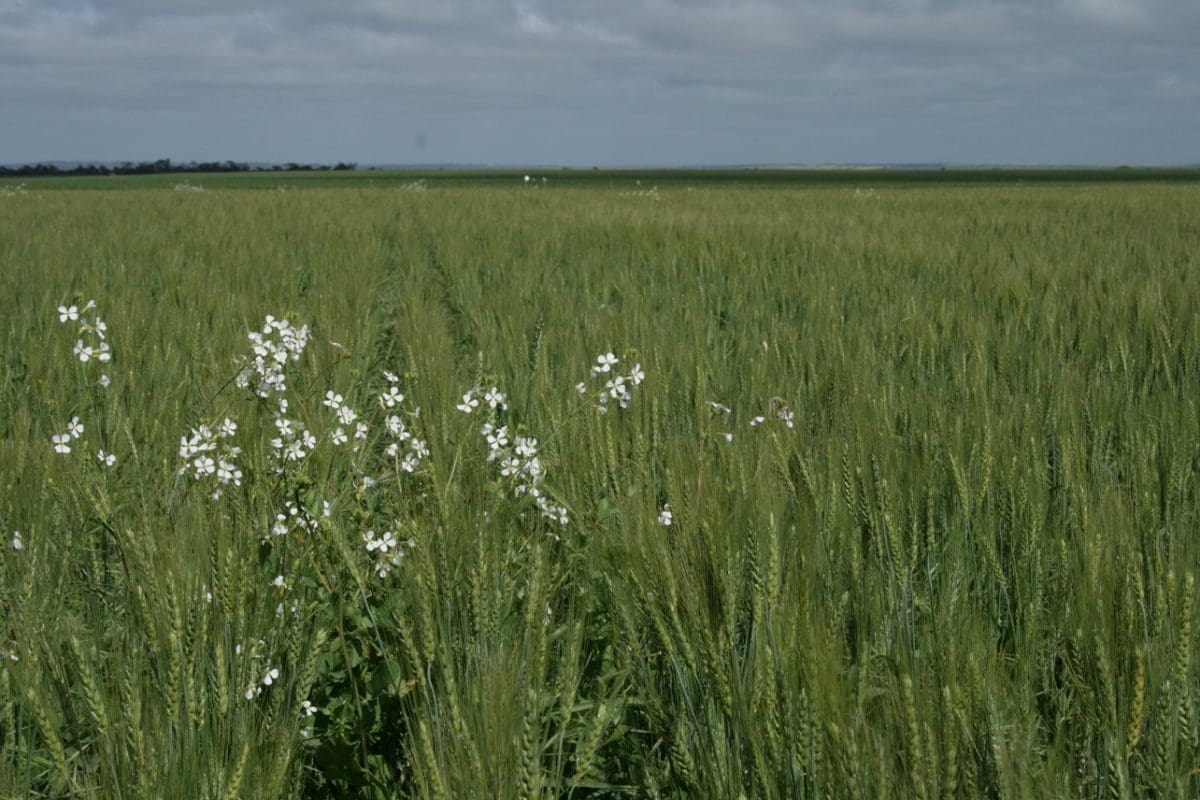
Wild radish.
GRAIN growers across Australia are being encouraged to implement a multi-faceted integrated weed management strategy which includes harvest weed seed control (HWSC) in order to gain the upper hand on wild radish.
Wild radish (Raphanus raphanistrum) is one of the most widespread broadleaf weeds affecting almost all grain growing regions in Australia and is becoming increasingly resistant to multiple herbicide modes of action, costing growers approximately $53 million in lost revenue per year.
GRDC manager weeds, Jason Emms, said management of wild radish was a long term prospect with the aim to drive seedbanks down and maintain them at low levels.
“Wild radish is such a difficult weed to manage and is quite variable in its biology,” Dr Emms said.
“It holds onto its pods and does not shed a large proportion of those on the ground, making it a great candidate for HWSC.
“Wild radish pods are also generally set high enough to be collected by the harvester.
“The key to management is preventing seed return to the seedbank and HWSC can help achieve this.”
Non-herbicide tactic
HWSC has been proven to be an excellent non-herbicide tactic to reduce wild radish numbers when applied to paddocks over multiple years.
Weed seeds can be collected and removed from the paddock using chaff carts, concentrated into a windrow for burning in autumn, delivered into a seed impact mill and destroyed or moved to narrow chaff lines via chaff lining or chaff tramlining.
Dr Emms encouraged growers to inspect paddocks in order to determine areas of weeds which had survived herbicide applications throughout the growing season.
“Right now, growers should be able to see what has survived herbicide application and it is important to carefully consider how to manage these remaining plants,” he said.
“Patch management can be tackled using knockdown herbicides and hand pulling remaining plants can be effective.
“For larger infestations of wild radish, late season in-crop herbicide application can be a useful management tool where registrations exist. However, HWSC can help in long-term prevention.”
Integrated control strategy
As wild radish is so persistent and hard to manage, Dr Emms said adopting a diverse and integrated control strategy would be most effective.
“Herbicides remain an important tactic to manage wild radish,” he said.
“However, an integrated program of herbicide and non-herbicide tactics is needed to reduce herbicide resistance and provide long term control.
“Each farm is different, so the management strategy needs to be tailored to suit each situation.”
Wild radish seed samples can be collected during harvest and sent away for resistance testing to help with weed management in following seasons.
“It is critical to understand which herbicide options remain available for effective management in the future,” Dr Emms said.
Source: GRDC
For more information regarding wild radish management options, read the new GRDC factsheet.
More information on HWSC and weed management is available through WeedSmart. Supported by GRDC, WeedSmart is the ‘single industry’ multi-channel platform for information on combating cropping weeds and herbicide resistance in Australia.



HAVE YOUR SAY